There are many beautiful and interesting towns in Tyrol and one of them is Kufstein, the second largest after Innsbruck. The symbol of Kufstein is the fortress of the same name, perched high on a rock. It was once called the "key to Tyrol". That's where we're going.
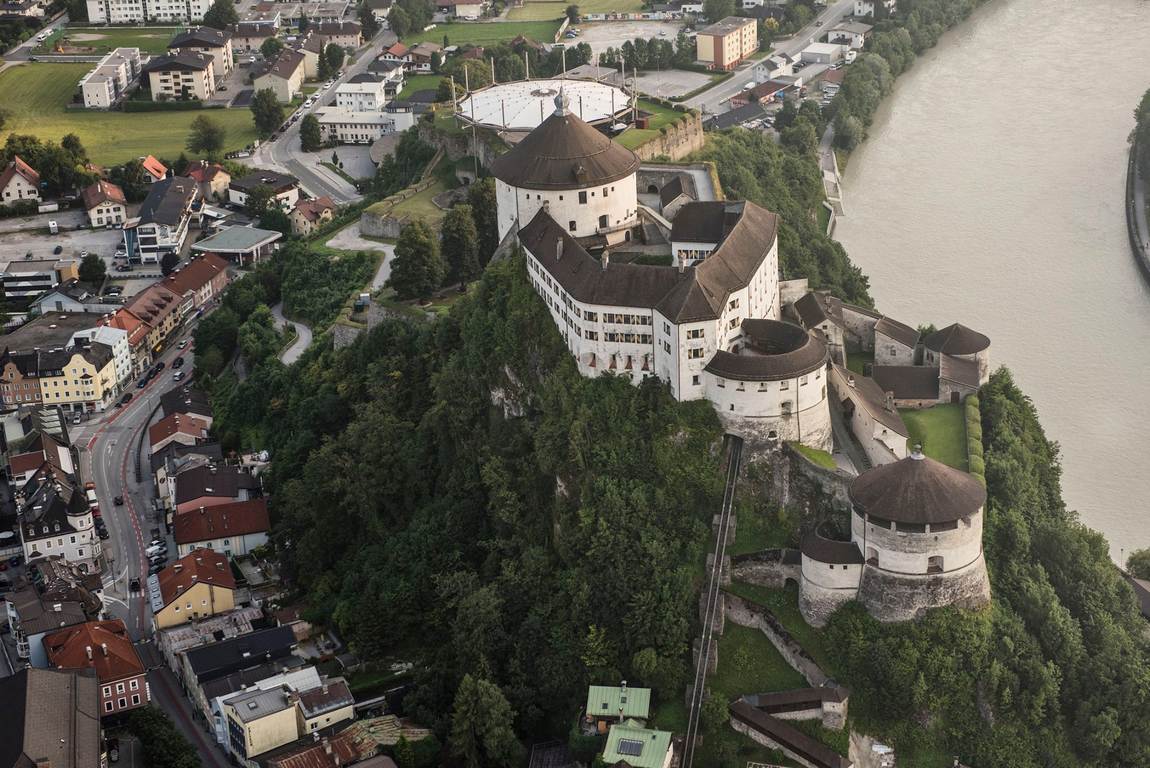
The History of Kufstein Fortress
The first mention of Kufstein Fortress dates back to 1205. At that time it belonged to the Bishop of Regesburg. In 1342, Margareta "Mautasch", Duchess of Tyrol, received Kufstein as a wedding gift from her husband Ludwig of Brandenburg, son of Emperor Ludwig of Bavaria. This was the first time she had been united with Tyrol.
When Margaret ceded the whole of Tyrol to Duke Rudolf IV of Habsburg in 1363, the Bavarians reclaimed the former dower and successfully took Kufstein. After the death of Duke Georg Rich of Landshut in 1503, the Bavarian-Palatinate War of Succession began between Upper Bavaria and the Wittelsbach Palatinate. Kufstein came into the possession of the Habsburgs in 1504.
Almost 200 years later, in 1703, Bavaria was again involved in the War of the Spanish Succession: on his way to Italy, Elector Max Emanuel marched against Kufstein. It was not until the end of 1704 that the siege ended and Kufstein and its fortress were returned to Austria. It was only 100 years later that the Bavarian flag flew again from Kufstein Castle: Napoleon I shocked Europe and annexed the whole of Tyrol, including Kufstein, to Bavaria.
It was not until 1814 that Tyrol returned to Austrian rule. After the First World War, the Republic of Austria sold the fortress, which was bought by the town of Kufstein, which has owned it since 1924.
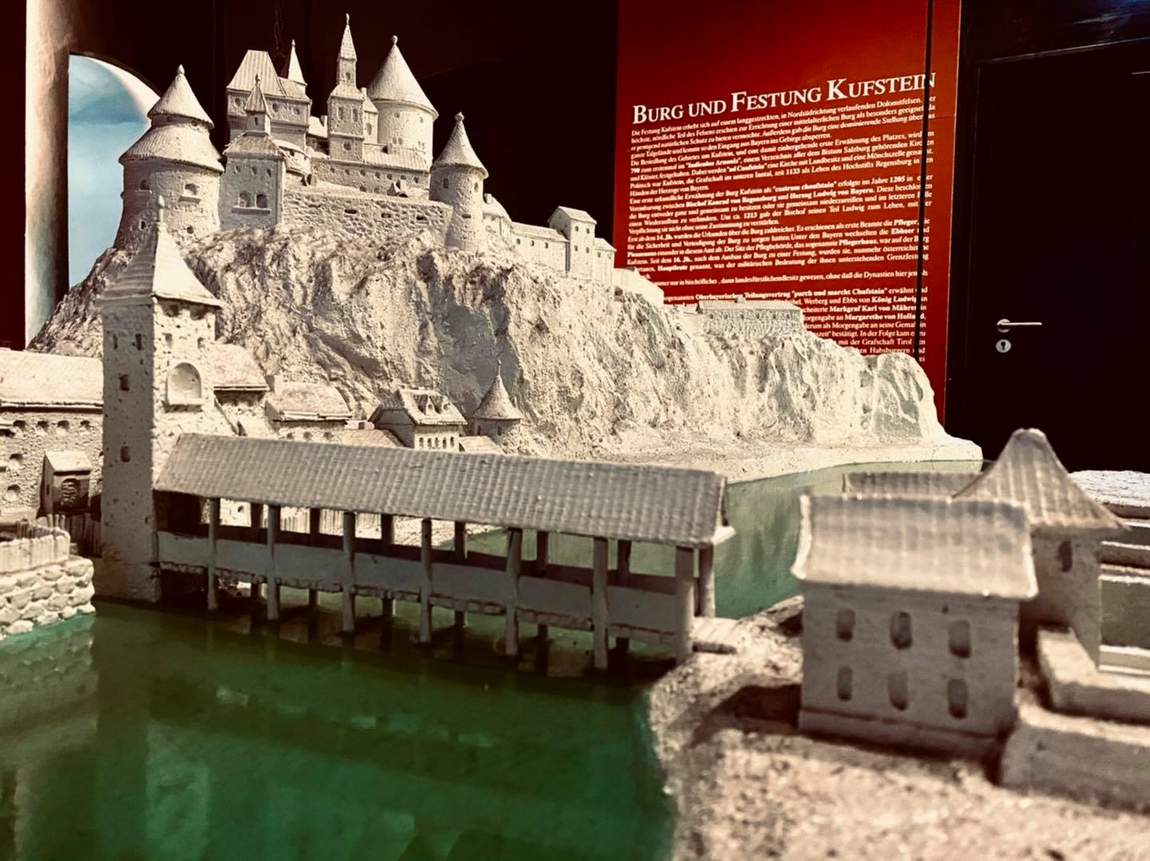
The area, what to see
If you come here in summer, you'll be enchanted by the organ music that blares every day at exactly 12 noon. In the 1930s, the world's first open-air organ was installed on the castle's highest tower. Today the antique instrument has 46 registers and more than 4,300 pipes! The remarkable "stuffing" of the organ makes the melodies audible - it's as if the music is coming at you from the sky. The instrument is normally used to perform songs in memory of people killed in wars. That's why the organ is called the Heroes Organ.
The top of Kufstein Fortress can be climbed on foot or by the old funicular, which dates back to the 17th century. The funicular once served as a supply of artillery shells and provisions for the upper towers. The funicular was closed and dismantled once in its history.
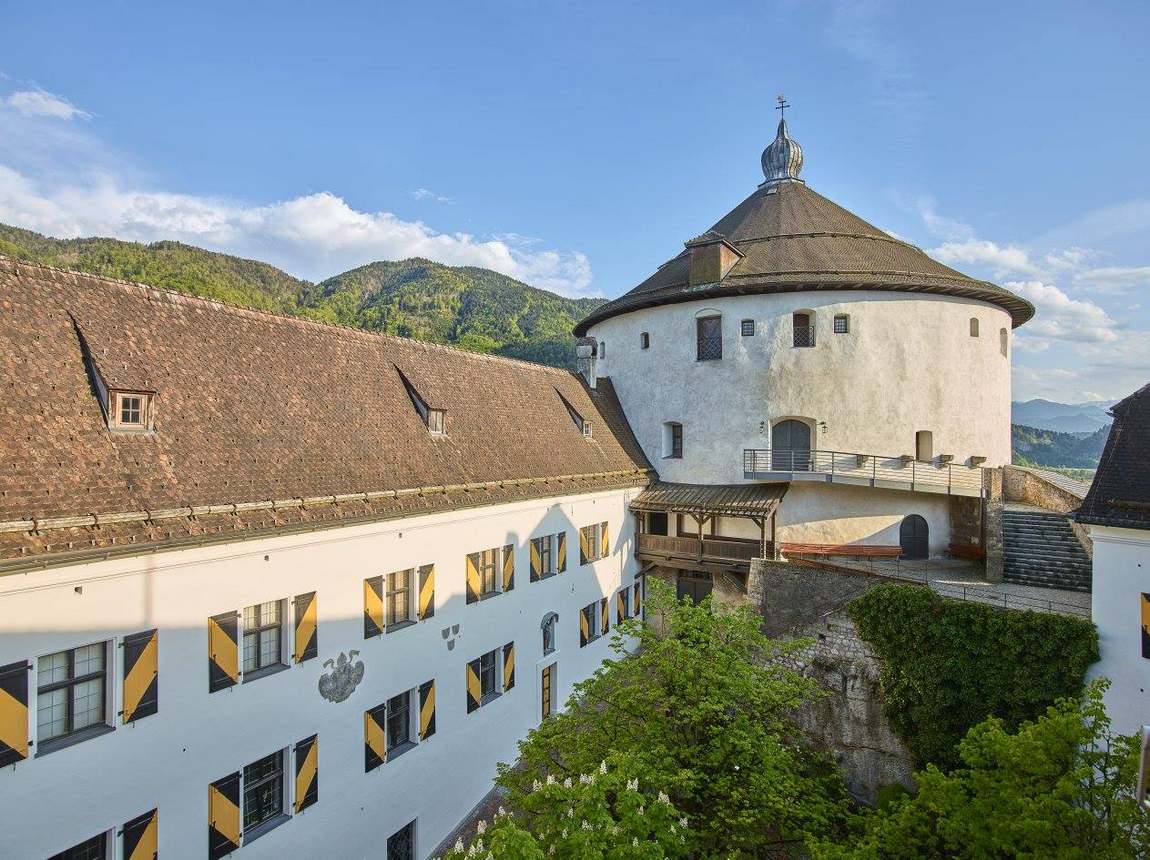
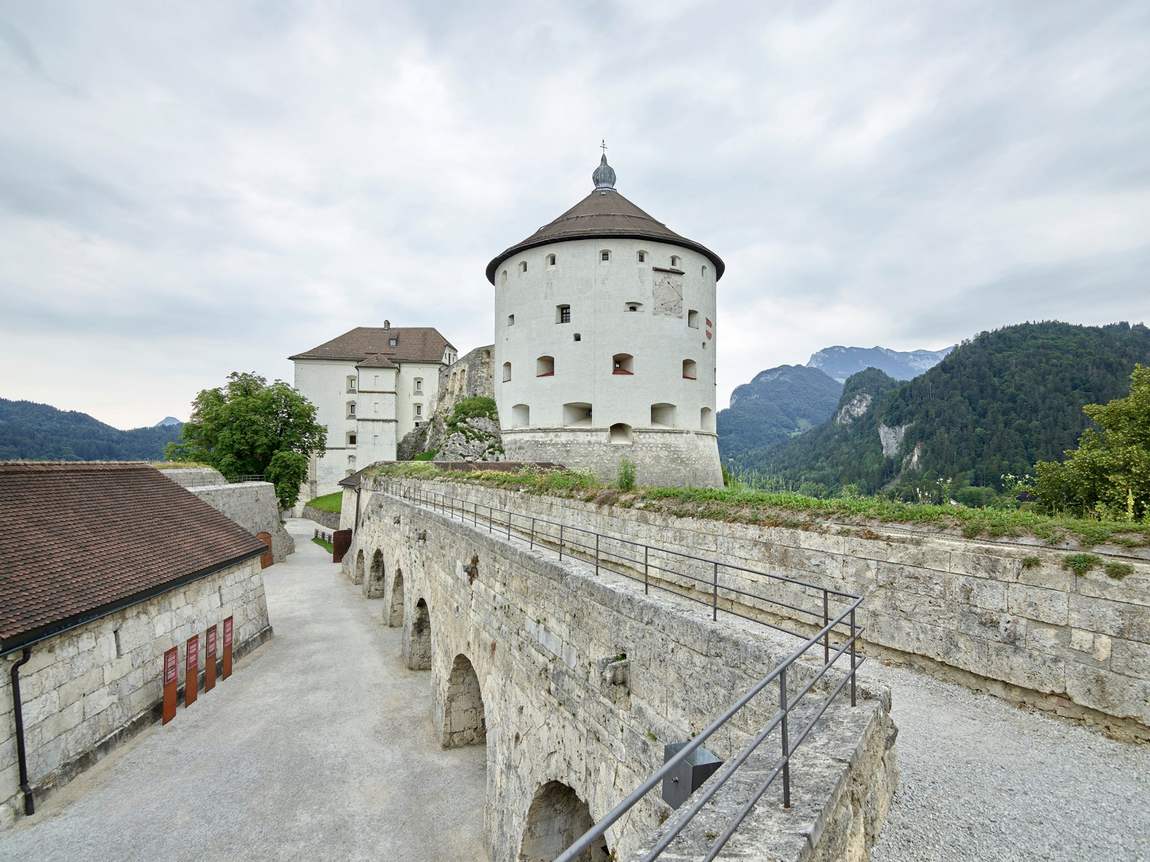
Let's take a walk around the castle grounds. It's huge and there's so much to see! Steep stairs lead up to the ramparts, which are up to 7.5 metres thick in places. You can see this in the arched passages, of which there are an impressive number throughout the castle.
There are many stone staircases covered with old wrought-iron railings. One of the steepest leads directly to the 19th century political prison. At the entrance on the right is a large marble plaque engraved with the names of all the local prisoners. Prisoners in the fortress were held one at a time, but it must be said that the cells were light and spacious. The prison was closed in 1939.
Today, Kufstein Fortress receives around 170,000 visitors a year, making it one of the most visited places in Tyrol. In addition, a wide range of events take place in the covered fortress every year, from rock and pop concerts to the Knights' Festival, magical Christmas events and a summer operetta.
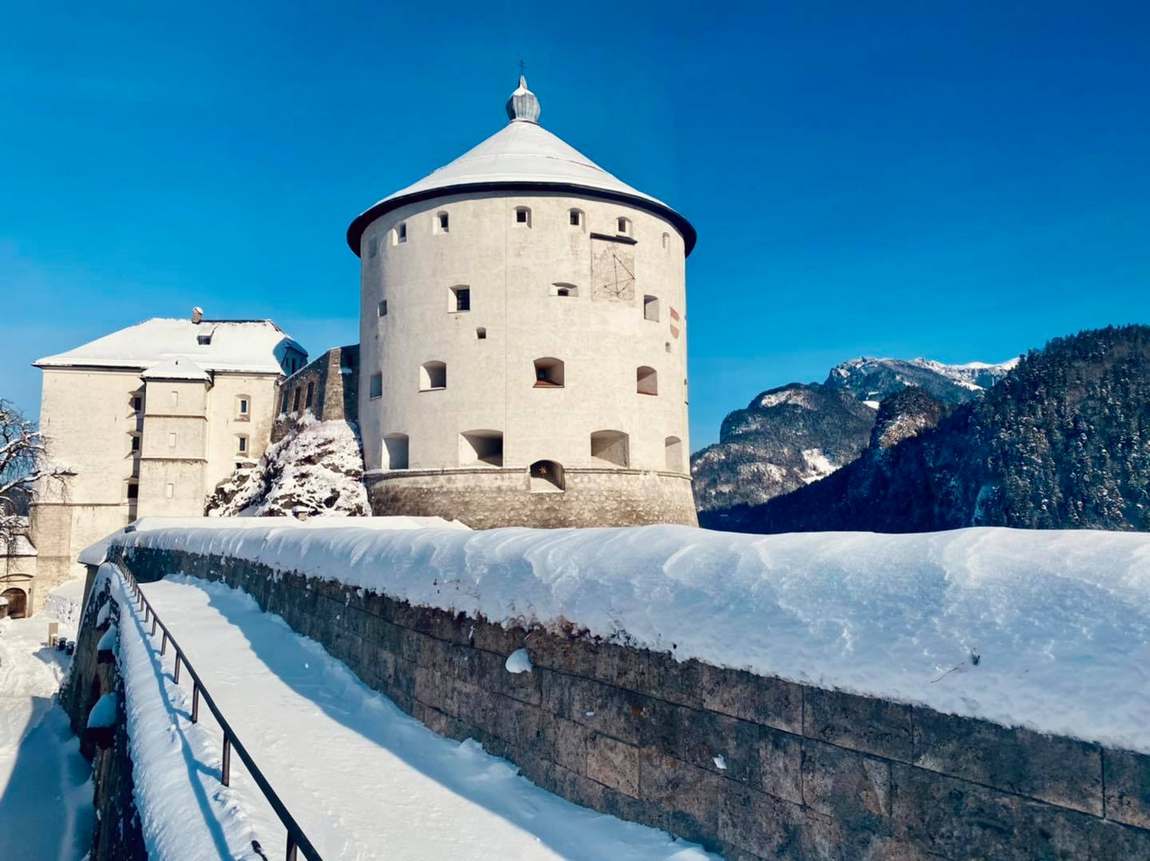
Kufstein Fortress for Kids
Every castle or fortress is of particular interest to children. There are legends, stories of knightly battles, riddles and mysteries. Children can spend more than an hour at Kufstein Fortress. Secret towers, hidden corners - Kufstein Fortress is also an ideal place for families to explore. The Association of Tourist Guides offers guided tours of the castle for school groups and children on request, even in period costume.
It's also the perfect place for a great birthday party. Children can go on an exciting journey through time and follow in the footsteps of Emperor Max, accompanied by a museum guide. If desired, the birthday party can be combined with an after-party with juice and cake, a "knightly" snack or a small "lord of the castle feast" in the castle restaurant.
The programme for children's birthday parties is very entertaining. When was Kufstein Fortress built, why is the Imperial Tower really called the Imperial Tower, how deep is the fountain and what has it all to do with Emperor Maximilian? On a fascinating treasure hunt, young children will follow in the footsteps of Emperor Maximilian, answering tricky, cryptic questions, finding hidden clues and unravelling the mythical secrets of this impressive fortress on the lush banks of the River Inn.
As part of its educational programme, the museum offers a range of workshops for groups of children of different ages. The most popular are "In the footsteps of Emperor Max", "Secret towers, hidden corners". During the summer holidays, there are also a number of activities on the programme that will appeal to young travellers.
It is advisable to have a snack before visiting the Kufstein Fortress. It's a long walk, with steep stairs and long passages. The castle's cosy restaurant serves a traditional Tyrolean menu, which is very hearty and tasty.
Additional info
Admission prices include
- Ascent and descent with the panoramic cable car
- Admission and individual visit to the Museum of Local History
- Visit to the museum in the former state prison
- Visit to the "Heldenorgel" and its pipes in the Bürgerturm tower
- Admission to the special exhibition "Emperor Maximilian and the Fortress of Kufstein
- Visit to the entire open-air grounds, including the deep well, the rock passageway, the kitchen and herb gardens, and the Elisabeth battery with its collection of cannons from the Vienna Museum of Military History.
- Audio guide app for IOS and Android smartphones available for download
- Wi-Fi throughout the fortress grounds
Please note the following:
- There are different admission prices during the Knights' Festival at Whitsun.
- Children up to the age of 5 are free!
- International student ID required for student discounts!
- The Heroes' Organ is played daily at noon and is included in the entrance fee to Kufstein Fortress.
- The Museum of Local History is closed during the winter season to allow for air conditioning and to protect the exhibits.
- It is not normally necessary to book a group for general, non-guided tours of Kufstein Fortress. Special arrangements (guided tours, special guided tours, lunch, etc.) can be made upon request.
- Please note that Kufstein Fortress is only partially accessible. Some parts of the fortress are not wheelchair accessible due to the construction.
- W-LAN is available in all outdoor areas of the fortress.











